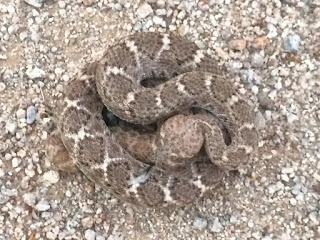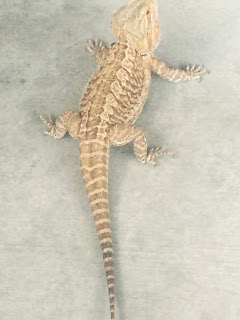
A comprehensive study by Beavers (1976) on the prey of C. atrox in Texas showed, by weight, 94.8% of their prey consisted of small mammals. According to Pisani and Stephenson (1991), who conducted a study of the stomach contents of C. atrox in the fall and spring of Oklahoma, mammalian prey included prairie dogs (Cynomys ludovicianus), kangaroo rats (Dipodomys ordii), pocket gophers (Geomys bursarius and Cratogeomys castanops), voles (Microtus ochrogaster), woodrats (Neotoma floridana), pocket mice (Perognathus hispidus and P. flavescens), white-footed mice (Peromyscus leucopus and P. maniculatus), Old World rats and mice (Rattus norvegicus and Mus ssp.), harvest mice (Reithrodontomys megalotis), fox squirrels (Sciurus niger), cotton rats (Sigmodon hispidus), ground squirrels (Spermophilus spilosoma), rabbits (Sylvilagus floridanus), jackrabbits (Lepus californicus), and an unidentified mole species. Klauber (1972) mentioned large specimens are capable of swallowing adult cottontail rabbits and even adult jackrabbits, although he figured the latter required confirmation.
Birds, lizards, and mice are also preyed upon, with lizards mostly being eaten by young snakes. Avian prey include mockingbirds (Mimidae), quail, a nearly full-grown Gambel's quail, a burrowing owl (Athene cunicularia), a fledgling horned lark (Eremophila alpestris) a black-throated sparrow (Amphispiza bilineata), and an eastern meadowlark (Sturnella magna). Lizard prey include a whiptail lizard (Cnemidophorus), spiny lizards (Sceloporus), a Texas banded gecko (Coleonyx brevis), and a side-blotched lizard (Uta palmeri). One case reported by Vorhies (1948) involved a juvenile specimen that had attempted to eat a horned lizard (Phrynosoma solare), but died after the lizard's horns had punctured its esophagus, leaving the lizard stuck there.
Hermann (1950) reported C. atrox also feeds on lubber grasshoppers (Brachystola magna). Klauber (1972) once found a single specimen in which the stomach contents included grasshoppers, beetles, and ants. However, mammal hairs and an iguanid lizard were also found in the same stomach, which made it more likely that the insects had first been eaten by the mammal or the lizard before they had been eaten by the snake.
They hunt (or ambush prey) at night or in the early morning.
These snakes can go for up to two years without food in the wild. A 5½-month starvation study showed the snakes reduced energy expenditures by an average of 80% over the length of the study. The snakes also feed from within on energy-rich lipid stores. The most interesting finding was the snakes grew during the study, indicating while the snake's mass was shrinking, it was putting its resources into skeletal muscles and bone.
A key participant in the food chain, it is an important predator of many small rodents, rabbits, and birds. In turn, it is preyed upon by a variety of larger mammals and birds, such as coyotes, foxes, hawks, and owls. Crotalus atrox can be active at any time of the day or night when conditions are favorable. It is primarily diurnal and crepuscular in spring and fall and becomes primarily nocturnal and crepuscular during the hot summer months.






